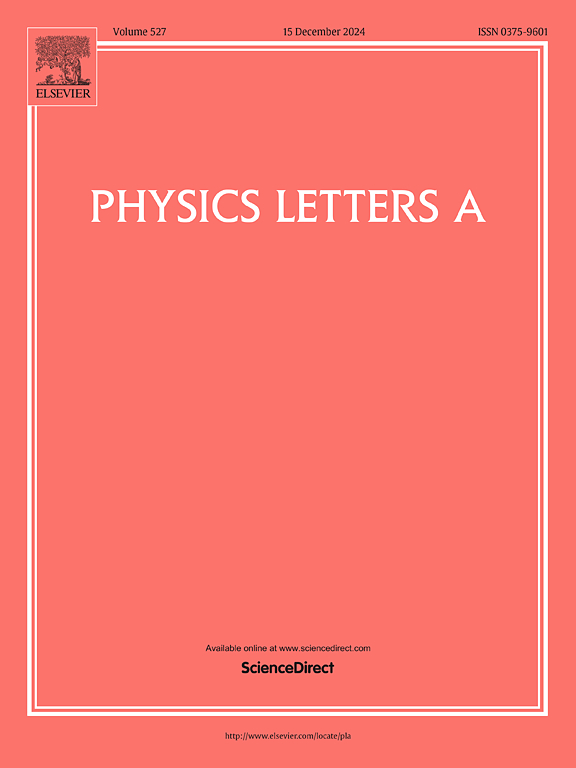Optoelectronic properties of two-dimensional InN/WGe2As4 heterostructure with a robust type-II band alignment
IF 2.3
3区 物理与天体物理
Q2 PHYSICS, MULTIDISCIPLINARY
引用次数: 0
Abstract
Two-dimensional van der Waals (vdW) heterostructures show great potential for use in electronic and optoelectronic devices due to their exceptional performance. The diversity of lattice stacking way endows 2D vdW heterostructures with superior tunability of electronic properties. This study systematically investigates the structural, mechanical, and optoelectronic properties of InN/WGe2As4 heterostructure based on first-principles calculations. Electronic structure calculations reveal that the InN/WGe2As4 heterostructure is a type-II semiconductor with an indirect bandgap of 0.51 eV. The optical absorption peaks in the ultraviolet region of the InN/WGe2As4 heterostructure are significantly stronger than those of InN and WGe2As4 monolayers. Furthermore, both biaxial tensile strain and decreasing interlayer distance could effectively decrease the bandgap and therefore lead to a red shift of optical absorption. In particular, the InN/WGe2As4 heterostructure exhibits a robust type-II band arrangement, which remains stable under the influence of biaxial strain and varying interlayer distance. The findings offer a route to achieve the robust type-II band arrangement heterostructure, which is helpful for the implementation of optoelectronic nanodevices with stable characteristics.
求助全文
约1分钟内获得全文
求助全文
来源期刊

Physics Letters A
物理-物理:综合
CiteScore
5.10
自引率
3.80%
发文量
493
审稿时长
30 days
期刊介绍:
Physics Letters A offers an exciting publication outlet for novel and frontier physics. It encourages the submission of new research on: condensed matter physics, theoretical physics, nonlinear science, statistical physics, mathematical and computational physics, general and cross-disciplinary physics (including foundations), atomic, molecular and cluster physics, plasma and fluid physics, optical physics, biological physics and nanoscience. No articles on High Energy and Nuclear Physics are published in Physics Letters A. The journal''s high standard and wide dissemination ensures a broad readership amongst the physics community. Rapid publication times and flexible length restrictions give Physics Letters A the edge over other journals in the field.
 求助内容:
求助内容: 应助结果提醒方式:
应助结果提醒方式:


